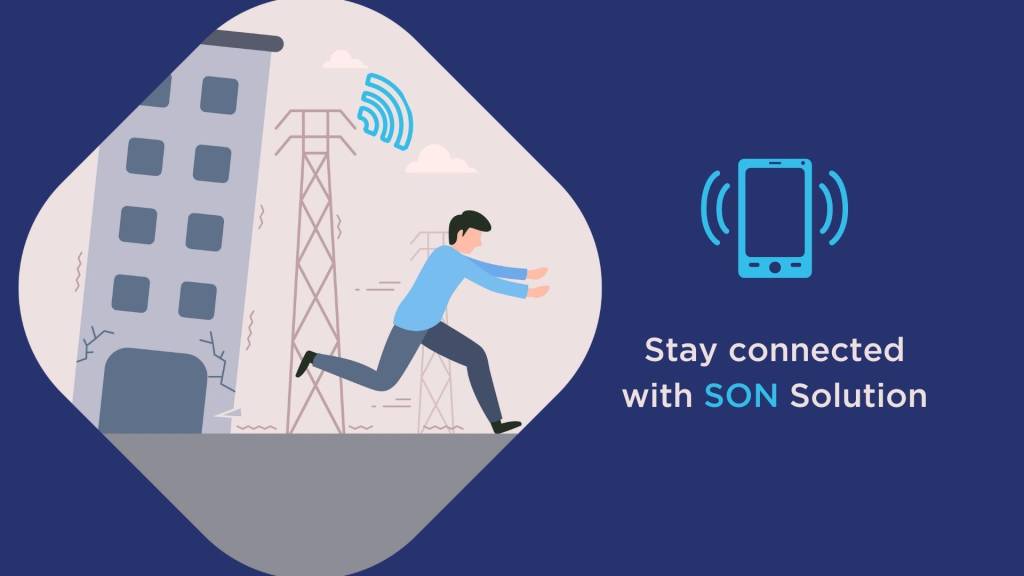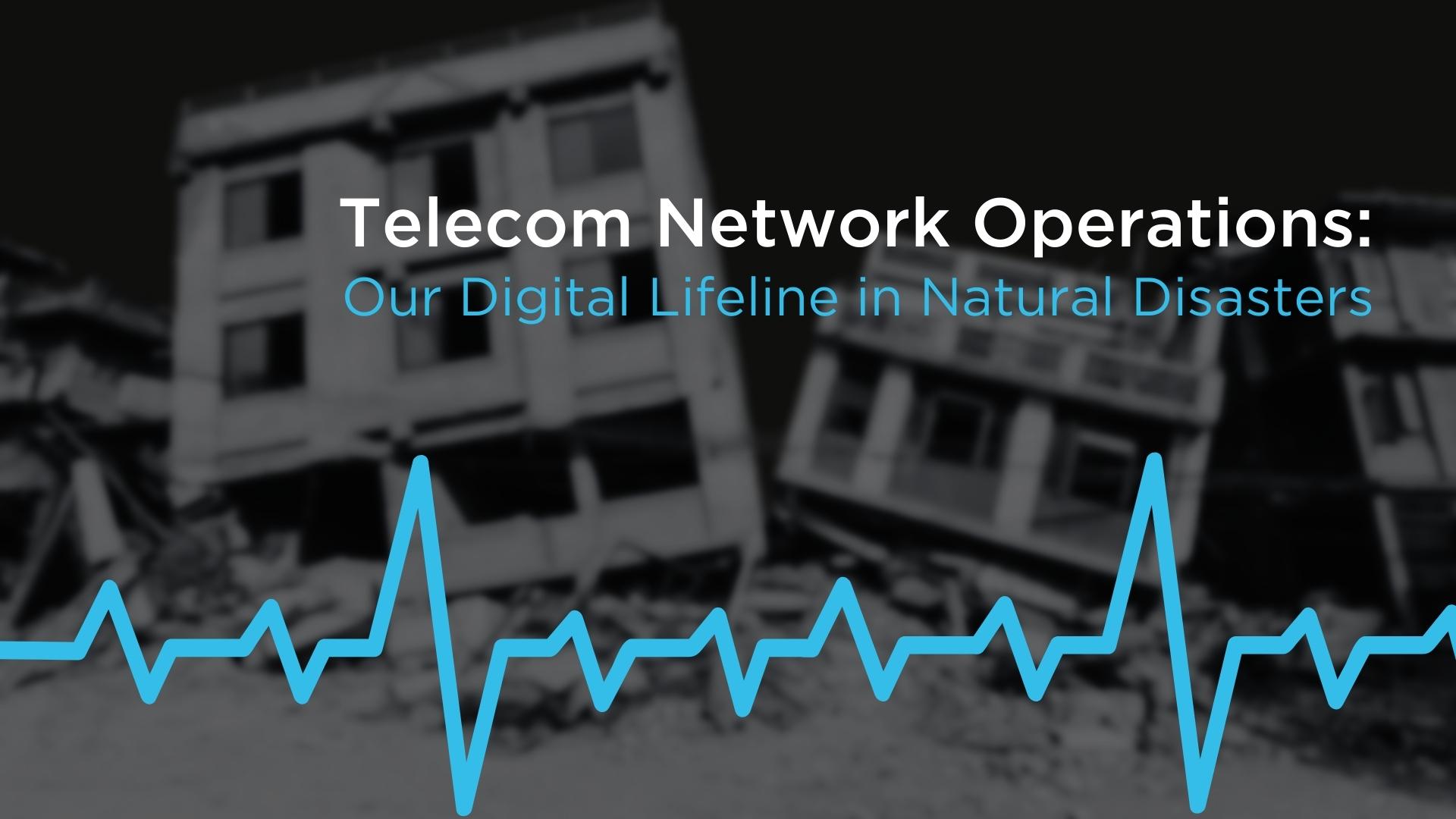Introduction:
When the earth shook in Turkey, the toll was catastrophic: 50,783 lives were lost, and 107,204 wounded across 11 provinces. The quake’s wrath touched at least 15.73 million people and razed about 345,000 apartments, leaving an indelible mark on the nation’s heart and infrastructure. In the face of such devastation, not only were the physical structures challenged, but the very fabric of our communication systems faced its ultimate test. In these crucial moments, the need for an unwavering communication link becomes paramount—a lifeline amidst chaos. This is precisely where SON solutions and mobile network automation can make a pivotal difference. Envisioning self organizing networks as the backbone of disaster response, we see the promise of resilient, uninterrupted connectivity when every second counts and every connection can save lives.
Addressing Natural Disaster-Induced Challenges for Mobile Operators
When a natural disaster like an earthquake occurs, mobile network operators can face a multitude of challenges:
Infrastructure Damage: Earthquakes can cause significant physical damage to cell towers, base stations, and other critical network infrastructure, leading to service outages.
Power Failures: Disruptions to the electrical grid can lead to power outages, which further hampers the operation of network equipment that relies on a stable power supply.
Overloaded Networks: There’s often a surge in communication attempts immediately following a disaster as people try to reach loved ones or seek assistance, which can overload network capacities and lead to system crashes or failures.
Access Issues: Damage to roads and transportation infrastructure can make it difficult for repair crews to reach and fix damaged network components quickly.
Supply Chain Disruptions: The ability to get replacement parts or additional equipment to expand capacity can be hampered by damage to supply chains and delivery infrastructure.
Personnel Challenges: The safety and availability of network operations personnel can be compromised, which affects the operators’ ability to respond to outages and repair damaged infrastructure.
Interference with Emergency Services: Ensuring that emergency services have priority access to the network can be challenging while also trying to maintain service for the public.
Lack of Coordination: Coordinating with other operators, government agencies, and emergency services requires robust communication channels, which can be compromised in a disaster.
Data Overload: The need to process and manage vast amounts of data during a disaster can overwhelm existing data management systems.
Security Risks: Disasters can lead to increased vulnerability to network security risks, as normal protocols may be disrupted or bypassed in the rush to restore services.
SON Solution in the Wake of the Natural Disasters
Imagine the immediate aftermath of the earthquake in Turkey—streets filled with debris, the air thick with dust and uncertainty. Amidst this chaos, the critical lifelines are not just search and rescue teams, but also the invisible signals connecting calls for help, coordinating relief efforts, and enabling the worried voices of families to reach out for loved ones. In such scenarios, telecom operators face the colossal task of restoring communication as quickly as possible.
Maximizing Network Resilience with SON Solution Modules in Natural Disaster Scenarios:
- Automatic Neighbor Relations (ANR) for Swift Network Adaptability: In the event of an earthquake, ANR within SON swiftly identifies network disruptions and automatically updates cell relations, enabling a seamless shift to functional cells and rerouting of data flows, thus maintaining service continuity.
- Self-Healing (SH) for Enhanced Response Times: SON's SH module rapidly mitigates network outages with minimal human intervention, significantly decreasing the time to recover from network disruptions caused by natural calamities.
- Mobility Load Balancing (MLB) for Traffic Management: : During heightened network demand post-disaster, the MLB feature of SON efficiently distributes traffic loads, mitigating the risk of network congestion and ensuring priority is given to emergency communication.
- Mobility Robustness Optimization (MRO) for Predictive Response: Utilizing advanced analytics, the MRO module of SON prepares the network for potential spikes in usage following aftershocks or additional emergency events, adjusting settings preemptively for robust performance.
- Automatic Plug and Play Optimization (APO) for Dynamic Capacity Allocation: SON's APO module facilitates the dynamic assignment of network resources, amplifying capacity in essential areas such as relief sites and medical facilities, adapting to the urgent needs of the situation.
- Configuration Consistency Audit and Correction (CAC) for Uninterrupted Emergency Services: The CAC aspect of SON ensures a consistent and error-free network configuration, which is critical for providing dedicated and reliable connectivity to emergency service providers.
- Code Optimization (CO) and Energy Saving (ES) for Sustainable Network Operation: Through CO, SON refines the usage of network codes for optimal performance, while ES contributes to reducing power consumption, which is particularly crucial during prolonged recovery efforts.
Integrating these SON modules, with a strong emphasis on mobile network automation, the network can dynamically and autonomously adapt to the rapidly changing environment post-earthquake. This hypothetical deployment of SON underscores the potential of automated network solutions to provide a robust, resilient network, ensuring the maintenance of critical communication pathways for emergency responders and the public during one of the most challenging times.
The Impact of SON Solution on Disaster Management
The integration of a Self Organizing Network (SON) solution in the wake of a catastrophic event can profoundly alter the landscape of emergency response and disaster management. SON solutions, at the heart of mobile network automation, are designed to be adaptive, resilient, and capable of real-time decision-making, which is crucial during crises.
With the implementation of a SON solution, the network is not only self-configuring but also self-healing, which significantly reduces downtime. This means that in the immediate aftermath of an earthquake when traditional communication infrastructure might fail, a SON-equipped mobile network can quickly recalibrate and restore services at a much faster rate. Such an automated response is critical in the golden hours following a disaster, where every moment counts for saving lives.
For first responders, a stable and reliable communication network is the lifeline that coordinates rescue efforts. A SON solution can provide them with an uninterrupted flow of information, facilitating real-time updates on the ground situation. This enhanced coordination can accelerate rescue operations, enabling responders to reach and extricate those trapped under the rubble more swiftly.
For survivors, especially those isolated by destroyed infrastructure, the ability to communicate with the outside world is paramount. A SON solution can maintain network connectivity, or rapidly restore it, allowing survivors to inform rescue teams of their locations and conditions. This can lead to more targeted rescue missions, optimizing the use of limited resources and increasing the chances of timely medical attention.
Moreover, mobile network automation through a SON solution can manage network traffic dynamically, prioritizing emergency calls and data transmission. It enables more efficient use of the network, ensuring that critical communications, such as those from disaster management authorities broadcasting safety information and updates, are not hindered by network congestion.
In the broader context, the resilience provided by a SON solution contributes to maintaining a semblance of normalcy in the affected regions. It supports the continuity of essential services, helps in the dissemination of information, and contributes to the stabilization of the affected communities. The psychological impact of being able to connect with loved ones and access supportive services cannot be overstated.
Overall, a SON solution represents a paradigm shift in how mobile networks can support society in times of crisis. It exemplifies how the principles of self organizing networks and mobile network automation can be harnessed to build more resilient communication systems that not only withstand the initial impact but also play a pivotal role in the recovery and rebuilding efforts that follow.
Conclusion: The Foundation of Unyielding Communication
The devastating earthquakes in Turkey have underscored the indispensable role of resilient communication systems. In the face of such calamities, the implementation of Self Organizing Network (SON) solutions emerges not as a luxury, but as a necessity. SON’s capabilities in mobile network automation epitomize the technological safeguard we must integrate into our disaster response strategies.
SON solutions, through their self-configuring, self-optimizing, and self-healing properties, promise a beacon of reliability amidst the chaos. They embody the foresight to maintain uninterrupted service when it’s needed the most, ensuring that when the ground shakes, our ability to communicate stands firm.
As we rebuild and look ahead, the adoption of SON as an integral component of emergency preparedness can be our commitment to resilience. By embracing the self organizing network’s robust framework, we can fortify our connections against the unpredictable forces of nature.
Thus, we stand at a pivotal moment to redefine disaster readiness. With SON solutions, we envision a future where, even when the earth trembles, our lines of communication remain unbroken—keeping us tethered to hope, aid, and each other.

